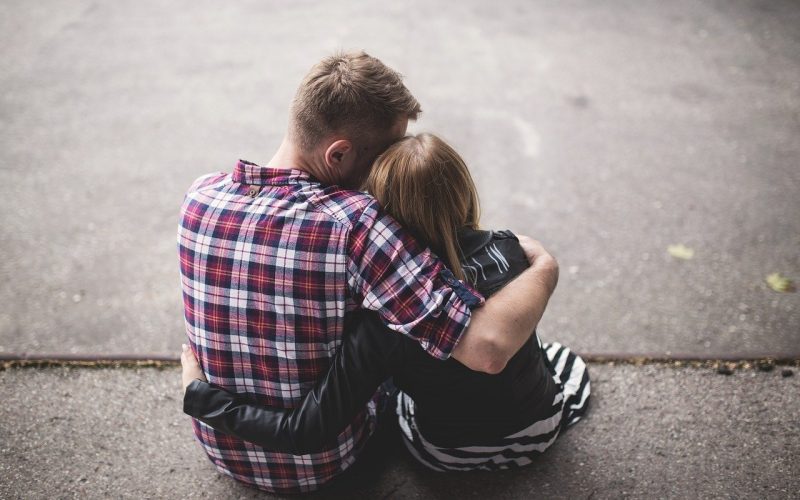Intimacy and physical touch are big parts of many people’s lives. A warm hug can offer a level of reassurance and comfort that words often can’t reach, and a strong embrace has the almighty power to make you feel safe and loved. For some people, however, hugs aren’t so much a comfort as they are a breach of personal boundaries.
The pandemic has certainly widened the gulf between huggers and non-huggers. While some of us have spent the past year or so craving physical intimacy and longing for the day when we can wrap our loved ones in a tight embrace, or even throw our arms around new acquaintances, others plan to stick to social distancing for a while longer. So, what is it about hugs that some of us crave so much? How can we navigate hugging and respect people’s boundaries in a post-pandemic world?
What’s in a hug?
There’s more to a good hug than just wrapping your arms around someone. In fact, there’s scientific evidence that hugs can really boost your mood. When we enjoy a long and meaningful hug, our brains release the hormone oxytocin, which helps us to feel calm and strengthens social bonds. Research has also found oxytocin to help decrease stress and anxiety. This means that a good hug can work wonders for some people’s mental well-being.
For many of us, hugging is second nature. Physiologist Helena Wasling explains: “I think what it means to be human is very much to be social and to be connected to other people. Our skin is meant to be there for intercommunication, human to human, which connects us and makes us the human beings that we’re supposed to be.”
It has been found that many children require hugs and physical contact from a young age as a part of their healthy development. Why then do the seemingly magical powers of hugging not apply to us all? While some people will jump at any opportunity for a hug, others find the interaction uncomfortable and prefer to keep their distance. The pandemic has also intensified this aversion to hugging for many, who feel far more at ease sticking to their personal bubble.
Why hugging isn’t for everyone
There are many theories about why some people are big on hugging and others show no interest in this form of physical contact. Some experts link this preference back to childhood, arguing that those who received a lot of hugs from their parents are likely to grow up enjoying hugging. A study from 2012 backs this theory up. It was found that people who were raised as huggers were more likely to enjoy hugging as an adult compared to those who weren’t.
On top of that, social anxiety plays a role in some people’s aversion to hugging. Put simply, people sometimes just don’t feel comfortable sharing a hug, particularly with someone that they don’t know well. Personal boundaries are extremely important, and for a lot of people, it isn’t so much a case of hugging vs no hugging. For example, they might feel perfectly comfortable hugging a family member but want to keep this intimate action reserved just for those personal relationships.
Data gathered by the halo diamond rings company Angelic Diamonds reveals people’s uncertainty about hugging and intimacy. After researching the most commonly Googled love dilemmas, searches relating to uncertainty about affection were shown to have increased over the course of the pandemic (between April 2020 and March 2021). For example, “Why does affection make me uncomfortable?” increased by 67 per cent, and “Why does he want to hug me so much?” increased by 400 per cent. Evidently, not everyone feels completely comfortable with hugging and intimacy. Therefore, it shouldn’t be taken for granted that a big hug upon meeting is what everyone wants.
Post-pandemic intimacy
Since the beginning of the COVID-19 pandemic, hugs have been under scrutiny. Social distancing rules have meant that throwing your arms around a loved one isn’t quite so simple anymore. For many, navigating hug etiquette during the pandemic has been an uphill battle. Even now, as restrictions are being loosened, hugging is still a contentious topic.
The question is, with so many different views on hugging at this stage in the pandemic, how can we make sure everyone feels comfortable? One way of dealing with this is pretty simple – asking. As restrictions are eased, everyone will be getting back to ‘normal’ at their own pace. Different people will have different personal boundaries. So, even if you can’t wait for close human contact, ask others how they feel about it. Be mindful that some people might still feel uncertain or anxious about hugging – whether their feelings are in relation to the pandemic or not.
What about other ways to show affection?
Although physical touch is a key Love Language for many people, there are plenty of other ways to express affection for your partner. Words of affirmation, spending quality time together, exchanging gifts, or other acts of gratitude can all be as meaningful as a hug. However, you choose to express love to your partner, your family, or your friends, the key thing to remember is respecting their boundaries. Asking what they’re comfortable with is the best place to start. Always remember that people will be readjusting to physical intimacy after the pandemic in their own time.
Striking the right balance with hugging and physical intimacy might feel like a challenge at first. However, if you find what’s right for you and listen to the needs of others, you can’t go wrong.
Sources:
https://www.psycom.net/oxytocin
https://www.chroniclelive.co.uk/news/tv/ben-shephard-tipping-point-hugs-20979630
https://www.thehealthy.com/mental-health/do-not-like-hugs/
https://journals.sagepub.com/doi/full/10.2466/02.17.21.CP.1.13
https://www.indy100.com/discover/science-hugging-contact-body-language-8594851
https://www.independent.co.uk/life-style/hugging-social-distancing-covid-rules-b1846131.html
https://www.theguardian.com/us-news/2021/jul/01/hugs-covid-coronavirus-the-return









